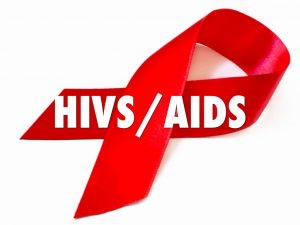
Heart Disease Diagnosis & Treatment is one of the most important topics about health because The heart has the function of circulating blood to different parts of the body. Without the heart, it is impossible to live. If the body will not receive blood, then there is no way it receives nutrition to do any physical work. The working of the heart is affected by many diseases. These diseases are either congenital or develop as we age. In both the cases, there is trouble in circulating the blood. This is the time when you need heart treatment.
There are different types of diseases which have the potential to hit our heart. Symptoms shown by each of them are as follows –
Chest pain, also known as angina is the most common symptom. There is discomfort, heaviness and painful feeling in the chest. Other symptoms include shortness of breath, palpitations, weakness, dizziness, and sweating.
Heaviness and pain the chest particularly below the breastbone. There is discomfort which radiates to the back and jaw. Along with all of these, there is sweating, nausea, and vomiting. Initially, there is the only discomfort but it can elevate to excruciating pain.
It is distinguished by an irregular heartbeat. Those heartbeats may be too fast or slow. The symptoms observed include fluttering of the heart, pounding in the chest, dizziness, fainting, fatigue etc.
Difficulty in breathing which occurs mostly when you are doing daily physical activities is the main symptom. There is also a feeling of extra weight put in the chest along with weakness and dizziness.
While coughing, there is white sputum coming out. There is a rapid gain in weight. Other symptoms include dizziness, weakness, swelling in ankles, legs, and abdomen.
Just like the symptoms, there are different causes of the diseases. Some of the causes are mentioned below –
This disease is caused in the body due to the buildup of plaque in the arteries. This plaque narrows the coronary arteries which lead to a lesser flow of blood. It happens due to different reasons such as smoking, high blood pressure, high cholesterol etc.
It occurs when the flow of blood is blocked. It happens due to the buildup of cholesterol. It is also known as atherosclerosis. One or the other plaques rupture and spill cholesterol or other substances into the bloodstream.
These irregular heartbeats are caused due to a heart attack which is occurring right now. There may be a prior heart attack which has scarred the heart tissue. Other reasons may include drug stress and sleep apnea.
There are two main causes of valve diseases. They are regurgitation and stenosis. In the former one, blood leaks backward as the valves don’t close properly. In the latter one, valves become narrow leading to reduced blood flow.
It occurs due to the accumulation of other conditions that have already weakened the heart. Some of the conditions which lead to heart failure are coronary artery disease, high blood pressure, faulty heart valves, cardiomyopathy, myocarditis etc.
Following are the tests which help in the accurate diagnosis of heart problem –
• Electrocardiogram – Also known as ECG, they record electrical signals which help in finding out the irregularities in the heart’s rhythm and structure.
• Holter monitoring – you need to wear this portable device to record a continuous ECG, usually for 24 to 72 hours. Heart irregularities which are not found in the tests are recorded in this test.
• Echocardiogram – It is a non-invasive test in which ultrasound of the chest is done to show the details of the heart’s structure and function.
Some of the common procedures to treat the heart of the irregularities are explained below –
This procedure involves the insertion of a tiny balloon which widens the clogged artery. It is often combined with a stent to diminish the chances of narrowing the arteries again. Angioplasty is mainly done to treat atherosclerosis. It is the buildup of fatty plaques in the blood vessels. If lifestyle changes are not enough, then angioplasty will be suggested to you. It is recommended to you in case of a heart attack or chest pain or some other related symptoms.
2. Coronary artery bypass surgery (CABG)
CABG is a major surgery in which the flow of blood is redirected around a section of the blocked artery. The new pathway improves the blood flow. The healthy vessel can be taken either from your leg, arm or chest. This surgery is an option when there is a narrowing of several arteries. If angioplasty is not working, then this surgery is suggested. It is also used in emergency situations such as a heart attack. Lifestyle changes are a must after the surgery.
A transplant is a surgical procedure which is done to replace a diseased and non-functioning heart with the help of a working one taken from a deceased donor. It is done to treat end-stage heart failure which is caused by coronary artery disease, heart valve disease, congenital heart defect, arrhythmia, amyloidosis etc. It is not a cure for heart disease but a life-saving treatment in itself.








